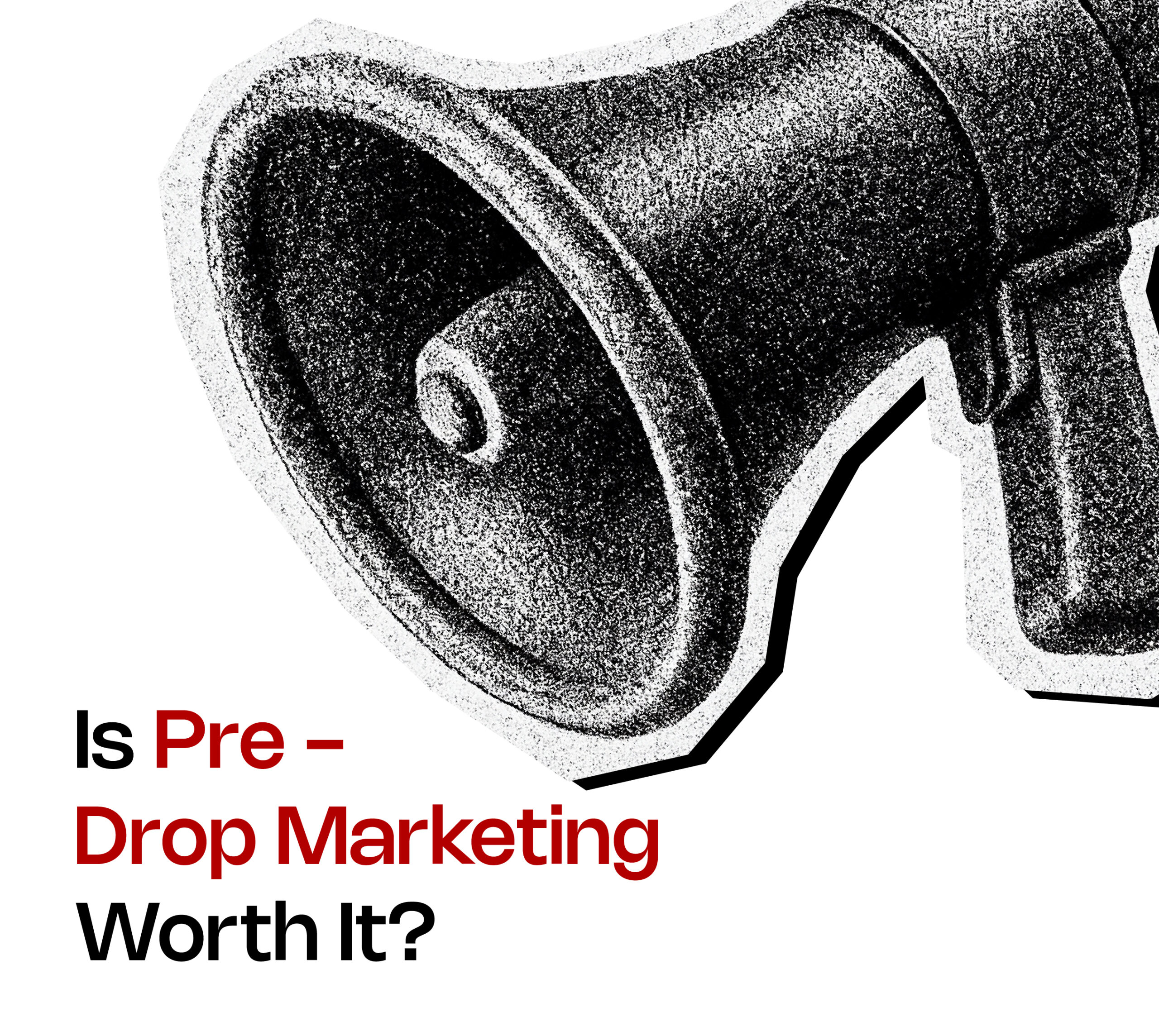
Pre-Drop Marketing: Selling a Vibe Before You Sell a Product
Why wait to launch your brand when you can launch your character instead? (Call it attitude, energy, chaos, pick your poison.) That’s the premise of pre-drop marketing: you start building demand, culture, and in-jokes before anything is actually for sale. Yet somehow there’s cryptic merch, a moodboard-led Instagram grid, and a 3‑second teaser of someone wearing a hat nobody can buy. Confused? Good. You’re supposed to be.
We’re Not Launching a Brand. We’re Starting a Cult (Community, if Legal).
Today’s audience doesn’t just want to buy things; they want to belong to a vibe, an aesthetic, a group chat with taste. Pre-drop is where you scatter breadcrumbs: fonts, AI renders, imaginary album covers, playlist links, half-finished type explorations. With enough intrigue, you’re not a brand; you’re a secret signal. Smart design + controlled mystery = magnetic pull.
Tease Like You Mean It (But Say Almost Nothing)
Rule one: never fully reveal; always imply. Post grainy polaroids captioned “coming, but not soon.” Drop a Spotify playlist called Pre‑Everything Energy. Leak a Google Doc with redacted copy. Let people project their meaning onto the mess. Obsession grows in negative space.
Merch First. Meaning Later.
Launching a product is hard. Launching a hoodie? Instant tribe. Concept merch says: We matter enough to have clothes, even if we’re still in prototype. Limited tees with inside jokes, fake Latin tags, coordinates to nowhere, this is pre-relevance branding. Agencies (hi, Logical Showsha) are already building ghost-merch drops to seed the community long before the commercial rollout.
Drops That “Leak” Themselves
Please retire “Exciting news coming soon!” Pre-drop energy is chaotic‑controlled. A Finsta posts a blurred packaging mockup, then deletes it. A hidden SoundCloud link titled Logo_Reveal_3.wav surfaces in a Discord. Leaks > press releases. The trick: engineered accidents that feel organic.
Let People Feel Like Founders
Humans love what they helped create (or think they did). Crowd-vote colorways. Collect fake taglines. Tease a date ghost return with “you asked, we listened.” By launch day, your audience has emotional equity. We do not correct them.
Momentum Beats “Perfect Timing”
Brands wait for readiness; culture rewards movement. Screenshots spread faster than strategy decks. If your product isn’t ready, your vibe better be. Also, your cousin’s Canva logo is not a launch plan. Get creative direction. Chaos needs craft.
TL;DR
1. Mystery > information.
2. Pre-drop is theatre, not traditional marketing.
3. Merch = beta community.
4. Confusion (controlled) fuels fandom.
5. Build a tribe; customers follow.
6. Hire people who can choreograph the drama.
If You’re Still Waiting to Launch, You’re Late.
Iconic drops rarely begin with “Here’s our product.” They start with a feeling: a cryptic grid, a pop‑up invite with no address, an aesthetic that spreads before SKU #1 ships. That’s pre-drop marketing, and it works because we’re all out here trying to buy meaning (sometimes in beige hoodie form).
Ready to build hype from zero? Let’s start, even if you’ve got nothing, especially if you’ve got nothing.
